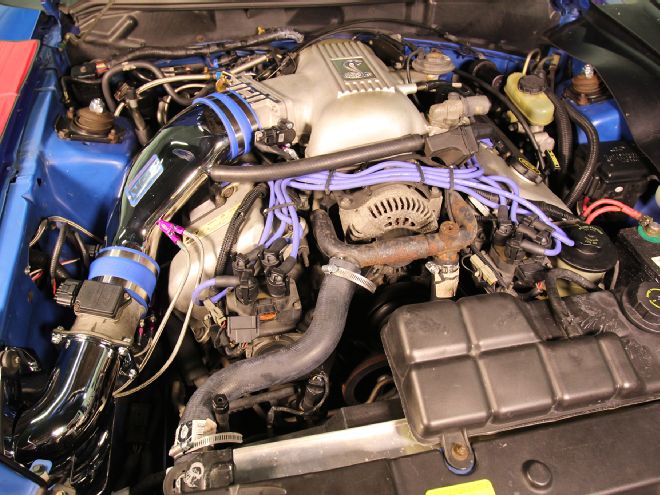
Are you looking for a bump in performance? Chances are you have many options. Some enthusiasts enjoy the challenge of keeping it all motor, while others take advantage of the benefits offered from nitrous oxide. With nitrous, you can bump power without digging into the engine. You maintain factory idle quality, drivability, and fuel economy—but with insane power on demand.
Companies like ZEX have upped the ante with advanced kits that offer Active Fuel Control, TPS Activation, and Fuel Shear Technology. In fact, with an adjustable nitrous kit, you can add a small punch or a big one. If your Mustang is older, and the engine has some miles on it, you may be after a small increase in power to keep your ride exciting. That was the case with a Cobra we recently encountered.
The owner was looking for a few extra ponies to rip around with. He wasn’t looking to invest in a new engine or spend thousands on a blower kit. He decided on a ZEX nitrous kit (PN 82023, around $600) for his 1998 SVT Cobra Mustang. We installed the kit at Brothers Performance in Deland, Florida, and tested the Mustang before and after on the in-house Dynojet chassis dyno.
Nitrous gives your engine extra oxygen. Combined with the extra fuel, big power results. Brothers Performance offers a wide range of nitrous oxide kits, along with nitrous accessories, so you can get the most from any system.
But simple doesn’t mean low-tech. This ZEX kit uses Active Fuel Control, which is a nitrous tuning and safety feature. Explains ZEX’s tech department, “In your engine a vacuum is created as nitrous gas is sprayed across the open end of the nozzle’s fuel transfer tube. As bottle pressure rises or lowers due to bottle temperature changes, the speed of the nitrous discharge varies to the same degree. This causes the level of vacuum draw in the fuel transfer tube to vary as well. This variable vacuum draw causes the ZEX nozzle to actually ‘pull’ more or less enrichment fuel into the engine. This means your engine never runs dangerously lean or overly rich. The nitrous tune-up stays dead-on for maximum engine safety and power at all times.”
Often you hear the terms “dry” and “wet” as they relate to the actual nitrous system. A dry system injects nitrous only; a wet system supplies nitrous with additional fuel. Furthermore, nitrous can be injected before the throttle-body (or just under the carburetor), or directly into the ports in the intake manifold.
Another great feature is the Throttle Position Activation. “For years, nitrous systems have been activated by use of crude push buttons and throttle arm activated micro switches,” ZEX explains. These components are complicated to install and setup properly and are prone to failing due to vibration and geometry. ZEX solves this problem by integrating microprocessor control circuits into the nitrous systems so that they “learn” the voltage curve of an engines throttle position sensor. “This enables our nitrous systems to activate at wide-open-throttle, precisely and reliably, every time,” says ZEX.
We installed the universal wet system for 1986 to 2004 V-8 Mustangs. The system is relatively easy to install and takes an afternoon. One thing that speeds the process is the ability tie into the factory fuel rail (using the Schrader valve) to get extra fuel. This works well with basic kits, which offer a power increase from 75 to 125 hp.
ZEX has also worked hard to perfect the Fuel Shear Technology, which injects enrichment fuel using a fuel transfer tube. “This tube allows the ZEX nozzle to directly inject fuel into the highest velocity area of the nitrous plume,” ZEX explains. “This high-speed nitrous shears the fuel away from the tube, atomizing it to levels other nozzle designs never achieve. This high level of atomization ensures perfect fuel distribution from cylinder to cylinder, ensuring that one cylinder is never dangerously rich or lean.”
Brothers Performance says, “This ZEX Wet nitrous kit is designed to work with 1986-2004 V-8 Mustangs, including the 2003-2004 Mercury Marauder. Designed to provide anywhere from 75 to 125 additional horsepower, this can also be installed on turbocharged/supercharged vehicles. The kit includes all the necessary components, including tuning jets, fuel tap fittings, and a Nitrous Management Unit that contains solenoids filters and activation electronics.”
Our baseline numbers were pretty typical for a well-worn 1998 SVT Cobra. It produced 279.84 rwhp and 282 lb-ft of torque. With the 75hp jets, the 4.6L DOHC engine jumped to 347.50 rwhp and a ground-pounding 403 lb-ft of torque. That’s a gain of 67 rwhp and 121.15 lb-ft of torque. The massive gain in torque made the Cobra amazingly snappy in the lower rpm range, which translated to tire smoke and a big smile on the owner’s face. Due to the high mileage, we didn’t take it any further—but there’s no doubt we’d see substantial horsepower gains and greater torque output with the 125 jets.
Ultimately, we were pleased with the install and the price. We transformed the Cobra for under $600 and gave its heart a shot of adrenaline. Of course you’ll have to refill your bottle every so often, but the simplicity and gains in performance make it a tremendous value that we can live with.
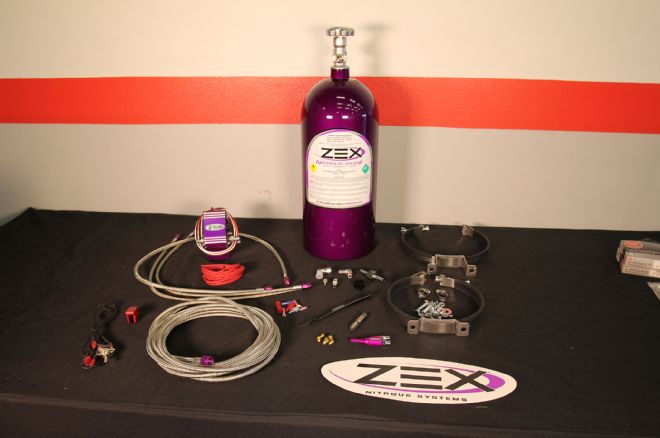
01. ZEX offers a variety of wet and dry nitrous kits including this EFI V-8 Universal Wet Nitrous System. It’s designed to work on stock type engines but is engineered to perform on boosted engines as well.
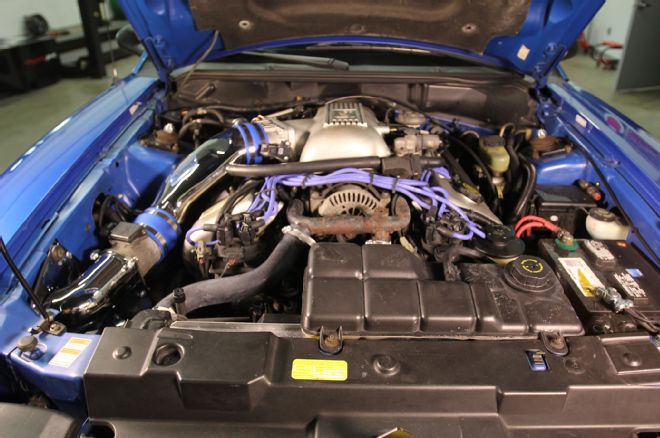
02. We installed ZEX kit PN 82023, which sells for around $600 from Brothers Performance.
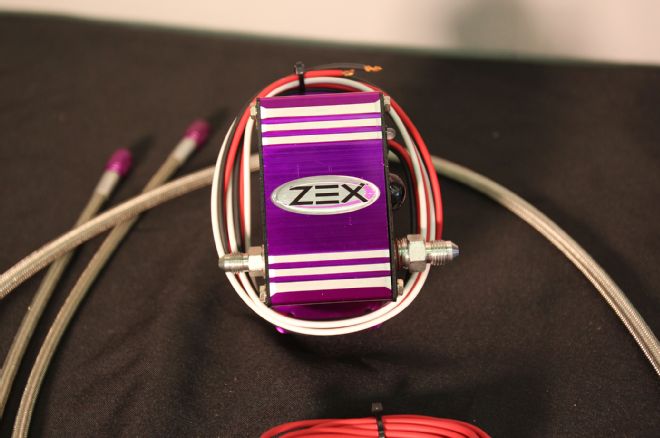
03. This is the ZEX Nitrous Management Unit (NMU), which controls the flow of fuel and nitrous.
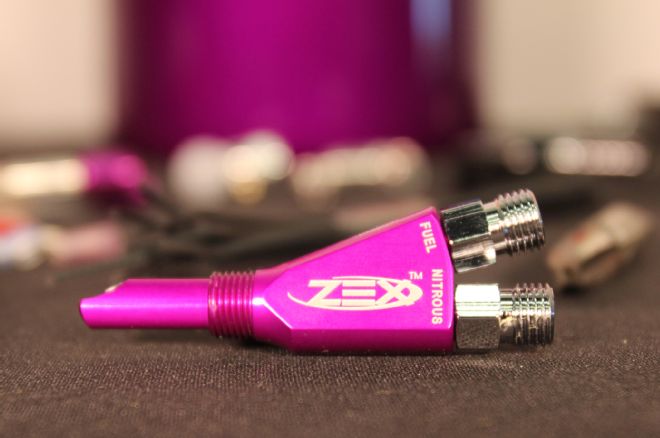
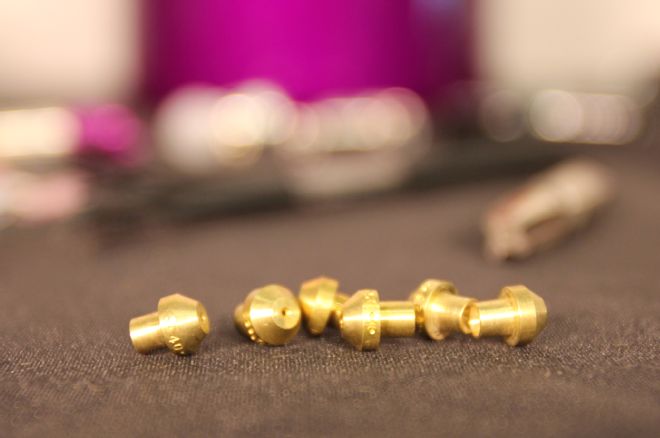
04-05. Fuel and nitrous are injected by this unique nozzle, which allows you to adjust the jetting. The kit comes with an assortment of jets.
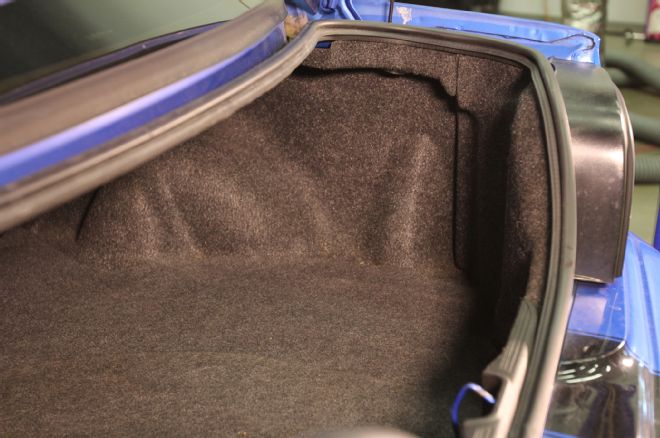
06. Before you install any of the kit, we recommend planning the best location for items such as the NMU as well as the nitrous bottle itself.
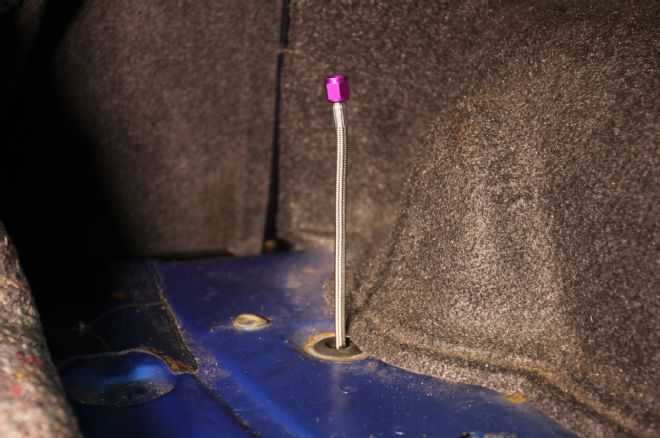
07. We removed the grommet located in the trunk and fed the nitrous line through it. This will connect the bottle to the fuel rail.
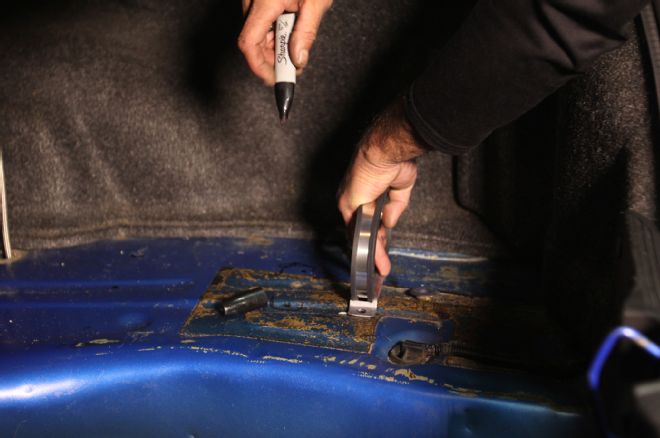
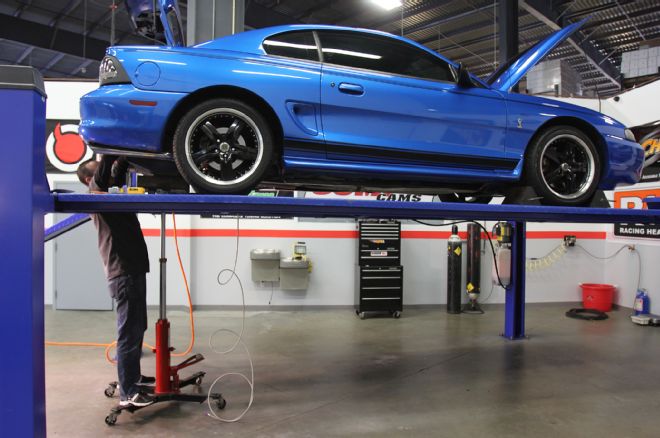
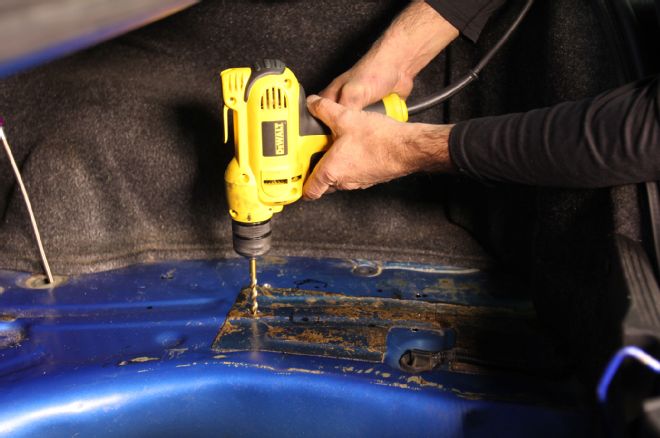
08-10. From there, we marked the location for the nitrous bottle brackets. We realized the location was directly above the fuel tank, so we raised the car and lowered the tank prior to drilling.
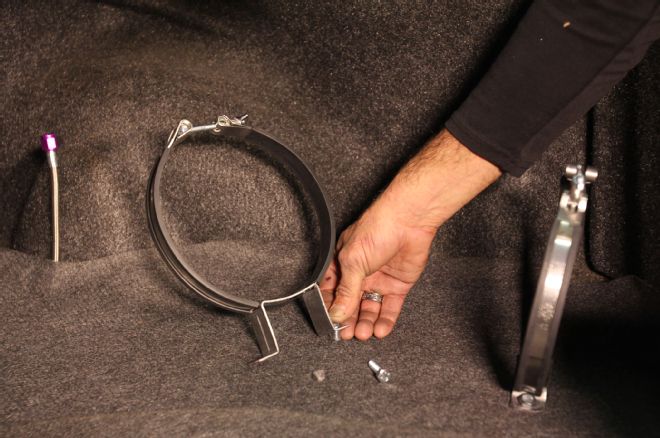
11. Next we mounted the brackets.
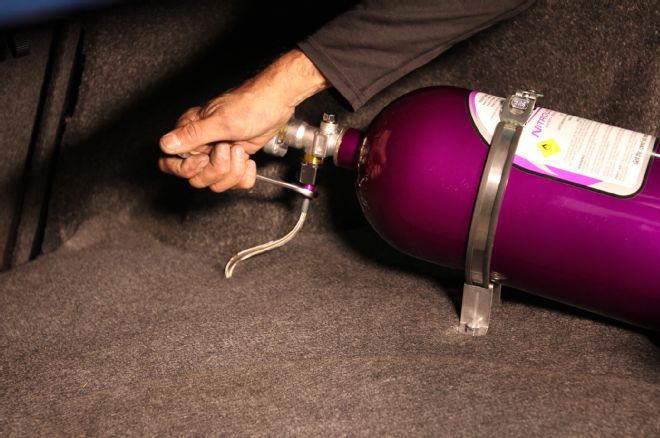
12. Then we slipped the bottle into place.
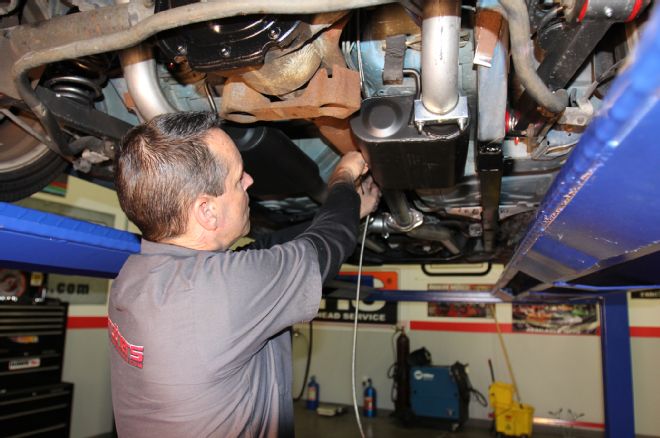
13. We fed the nitrous line to the front of the Cobra Mustang.
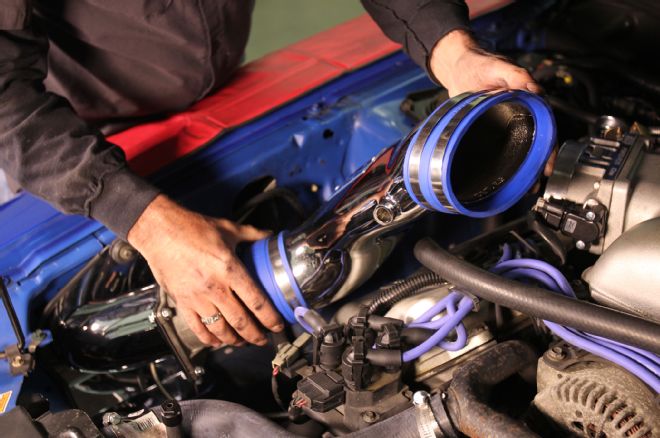
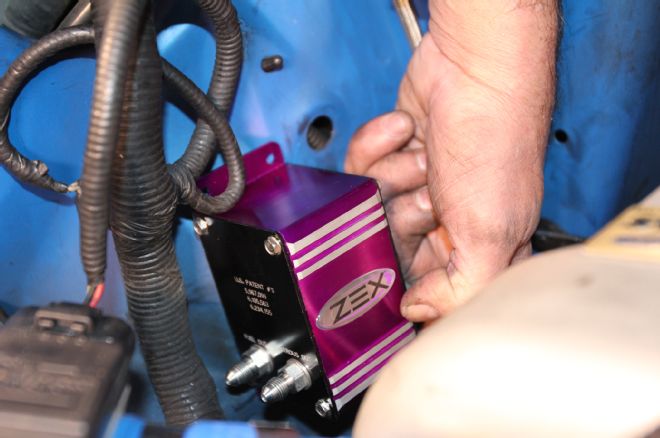
14-15. We removed the BBK intake elbow and found a nice spot for the NMU on the inner fender.
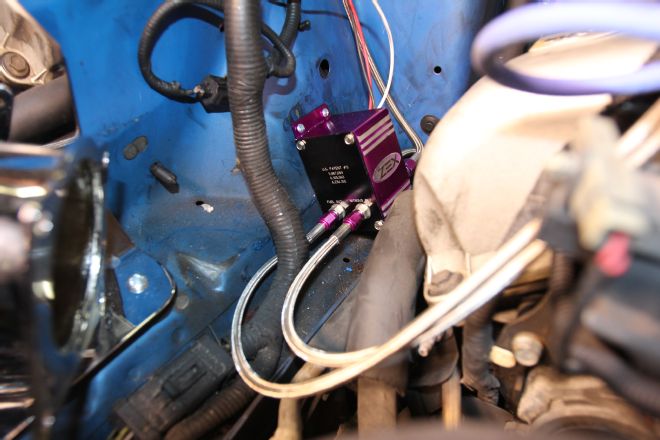
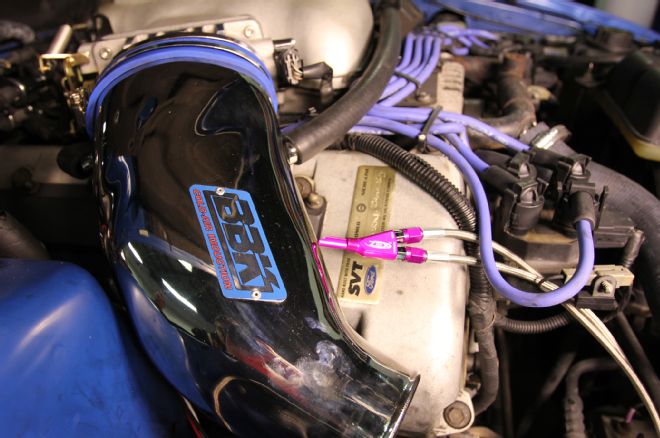
16-17. With that, we installed the feed lines to the nitrous nozzle and picked a location in the elbow to tap into.
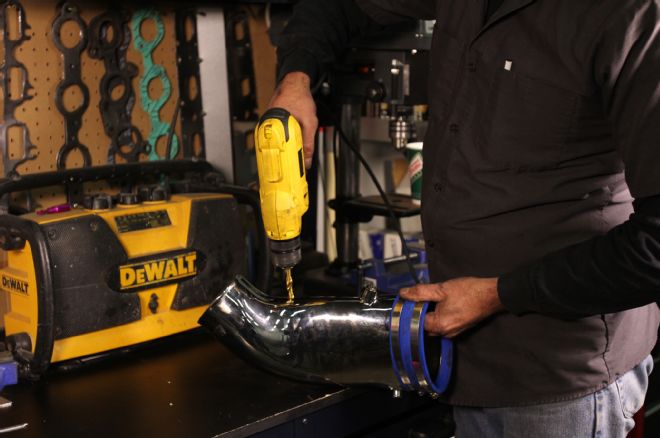
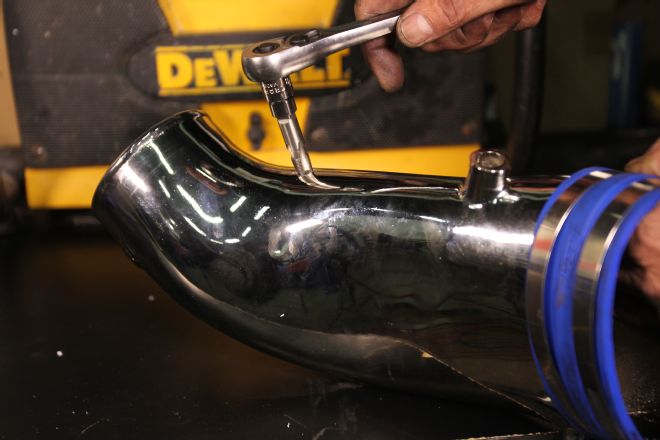
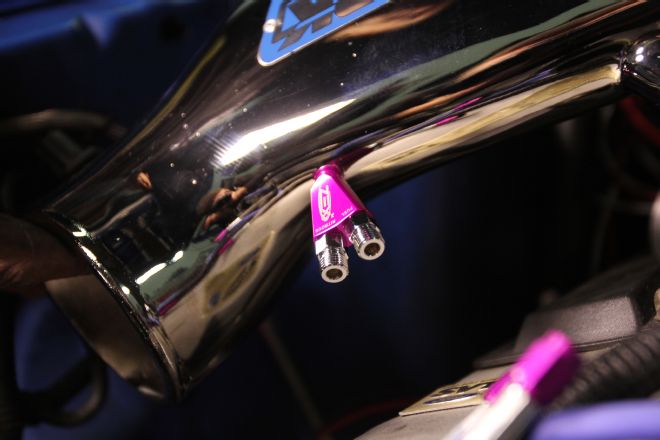
18-20. Next, we drilled and tapped the elbow, making sure the nozzle would be positioned properly once installed.
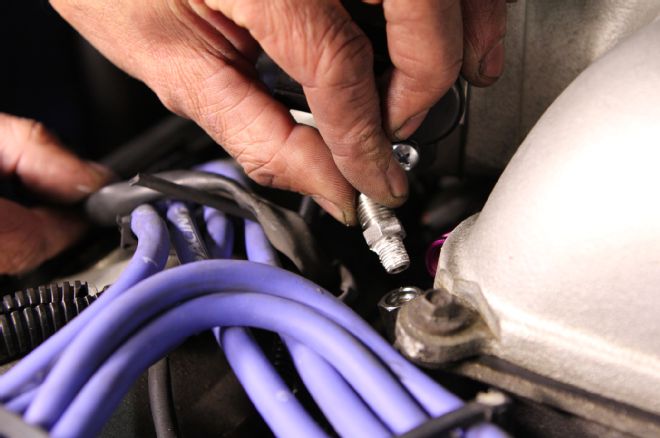
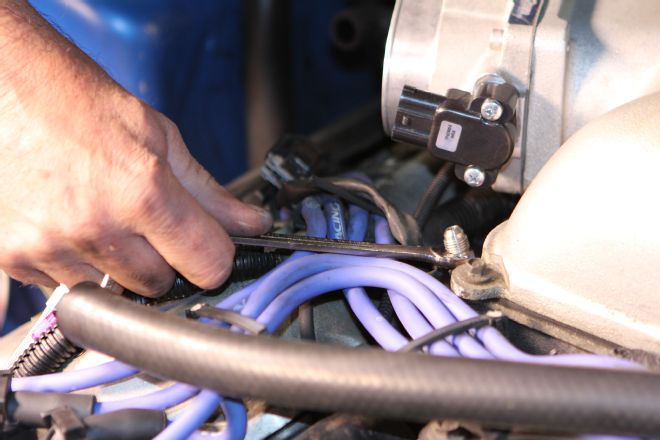
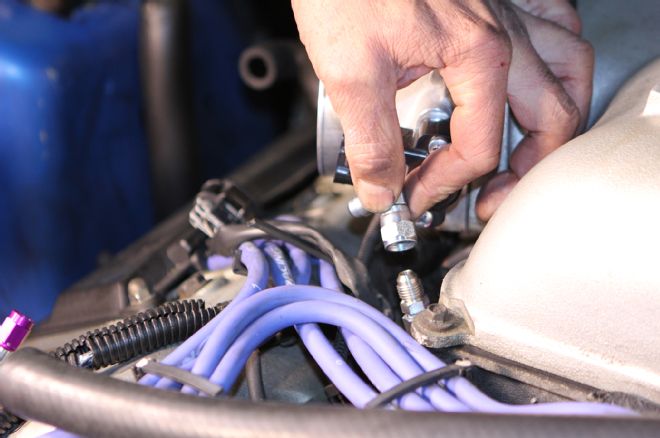
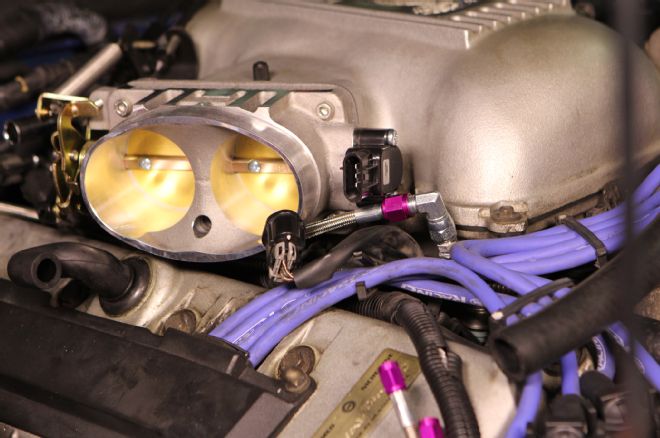
21-24. We then removed the Schrader valve and installed the supplied fittings and lines.
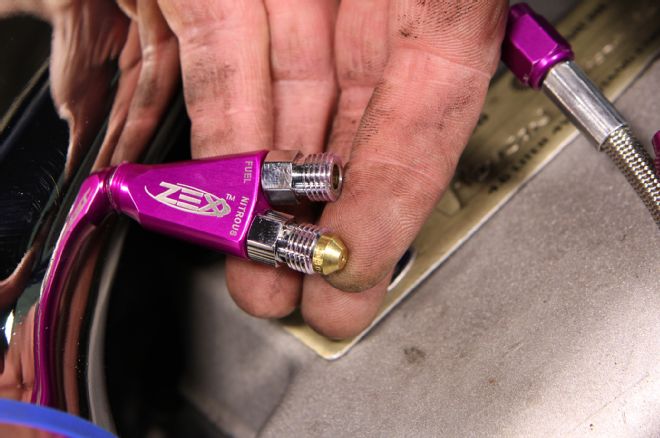
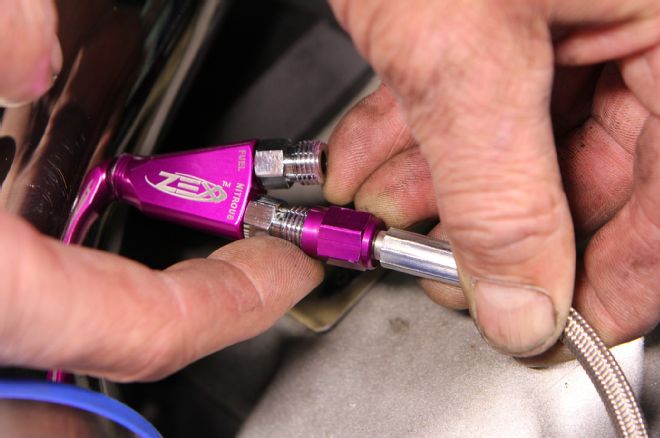
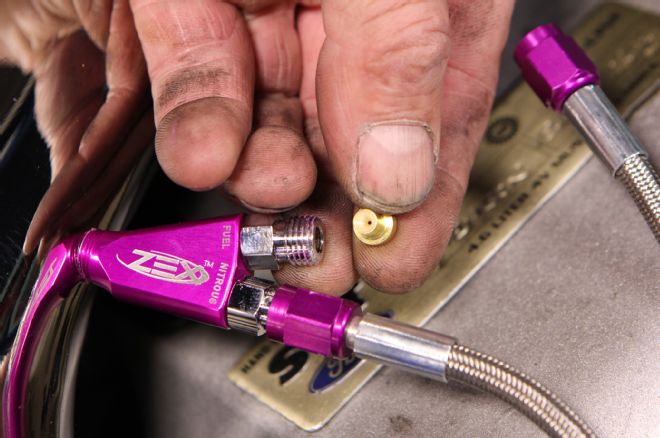
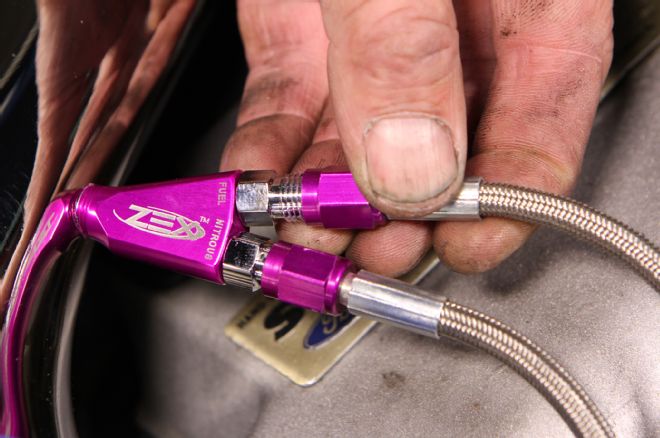
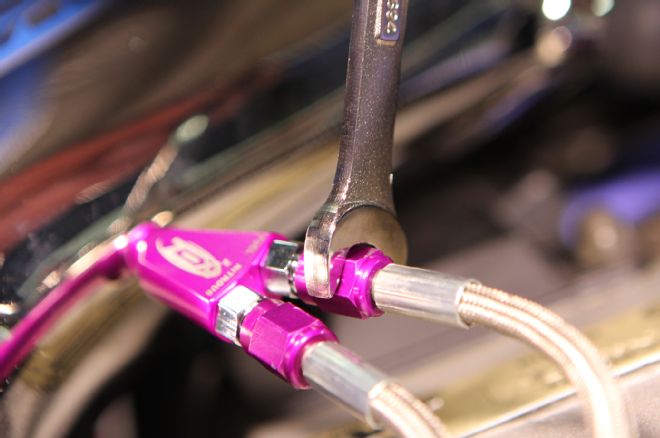
25-29. With the hardware installed, we selected the jets to give us an increase of 75 hp.
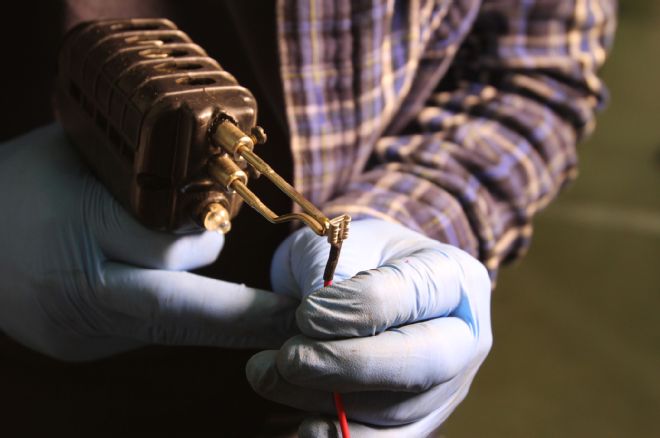
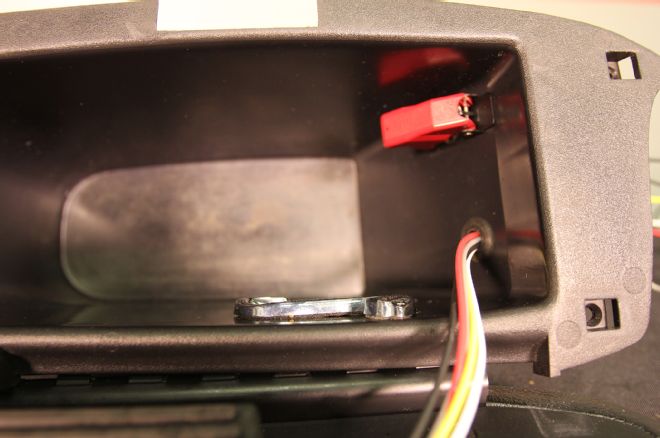
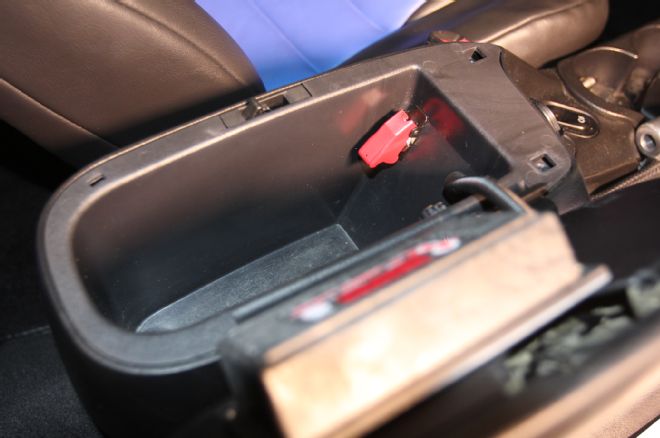
30-32. We wired the system. We found a suitable ground for the black wire and connected to it with the included crimp-on ground ring. The red wire goes through the firewall and passes through a grommet hole. We then ran the white wire from the NMU to the output voltage lead from the throttle position sensor. Then we hooked up the arming switch. We mounted it in the center console storage area. ZEX says that because “the ZEX wet nitrous system draws 10 amps, ensure the electrical circuit you are tapping into can handle the increased current load.” Finally, we took the lead from the arming switch and connected it to the red wire from the Nitrous Management Unit. That’s it. Let the fun begin!